 Search by Keyword
|
"YELLOW SUBMARINE"
(Apple SW 153)
Released January 13th, 1969
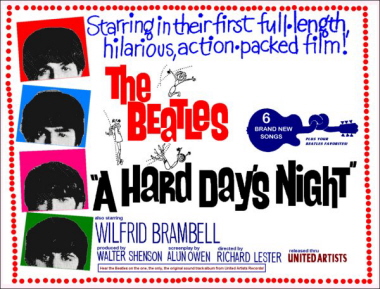 “Yellow Submarine” is the title of the first and only full-length animated movie featuring the music of The Beatles. This was the third Beatles movie prepared to fulfill the October 1963 agreement with United Artists. The first two movies made in this three-film deal with the company were highly successful box office hits, namely “A Hard Day's Night” and “Help!” Negotiations were being made for a third movie as early as February 1965, film titles such as “A Talent For Loving,” “Shades Of A Personality,” “Up Against It,” “The Three Musketeers” and even a film adaptation of J.R.R. Tolkein's “The Lord Of The Rings” being discussed. As it was, The Beatles weren't keen on making a third movie at all and thought it would be an appropriate way to fulfill their contract with United Artists by allowing Al Brodax to create an animated movie without need of much involvement from them. “Yellow Submarine” is the title of the first and only full-length animated movie featuring the music of The Beatles. This was the third Beatles movie prepared to fulfill the October 1963 agreement with United Artists. The first two movies made in this three-film deal with the company were highly successful box office hits, namely “A Hard Day's Night” and “Help!” Negotiations were being made for a third movie as early as February 1965, film titles such as “A Talent For Loving,” “Shades Of A Personality,” “Up Against It,” “The Three Musketeers” and even a film adaptation of J.R.R. Tolkein's “The Lord Of The Rings” being discussed. As it was, The Beatles weren't keen on making a third movie at all and thought it would be an appropriate way to fulfill their contract with United Artists by allowing Al Brodax to create an animated movie without need of much involvement from them.
 Al Brodax, who produced the King Features cartoon series of The Beatles in America, approached Brian Epstein in 1966 about such an endeavor. "Brian had set it up and we had nothing to do with it," John stated in 1968. When an agreement was made, the contract allowed them to use as many as twelve previously released Beatles songs, but also required four new songs for the film. Since the group only reluctantly agreed to participate in this project, they would save songs they deemed unsuitable for their current releases, such as “Magical Mystery Tour,” and submit them for the animated film project. George Martin remembers: “Whenever we were working on a song that we didn't like too much, or wasn't that brilliant a one, they would say, 'OK, let's put that one aside, that will do for the Yellow Submarine.' That was the attitude.” Al Brodax, who produced the King Features cartoon series of The Beatles in America, approached Brian Epstein in 1966 about such an endeavor. "Brian had set it up and we had nothing to do with it," John stated in 1968. When an agreement was made, the contract allowed them to use as many as twelve previously released Beatles songs, but also required four new songs for the film. Since the group only reluctantly agreed to participate in this project, they would save songs they deemed unsuitable for their current releases, such as “Magical Mystery Tour,” and submit them for the animated film project. George Martin remembers: “Whenever we were working on a song that we didn't like too much, or wasn't that brilliant a one, they would say, 'OK, let's put that one aside, that will do for the Yellow Submarine.' That was the attitude.”
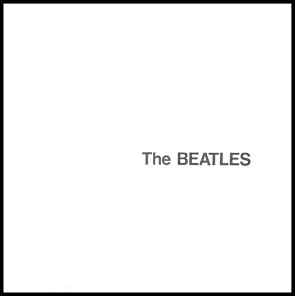 The movie was released in America on November 13th, 1968, but the accompanying soundtrack album wasn't released until a full two months later. This means that moviegoers heard a handful of new Beatles songs in the theater as part of the movie but were not able to own them for another two months. However, with the release of their new double album “The Beatles” (aka the “White Album”) a week and a half later on November 25th of that year, Beatles fans had quite enough to occupy them in the meantime. Since the film opened much earlier in England, on July 17th, 1968, British audiences had to wait a whopping six months to get their copies of these songs. The movie was released in America on November 13th, 1968, but the accompanying soundtrack album wasn't released until a full two months later. This means that moviegoers heard a handful of new Beatles songs in the theater as part of the movie but were not able to own them for another two months. However, with the release of their new double album “The Beatles” (aka the “White Album”) a week and a half later on November 25th of that year, Beatles fans had quite enough to occupy them in the meantime. Since the film opened much earlier in England, on July 17th, 1968, British audiences had to wait a whopping six months to get their copies of these songs.
Origin Of The Album
With the film opening in England in July of 1968, Capitol Records assumed that a soundtrack album for the movie would be released very soon. Capitol thereby reserved a catalog number (ST 2957) for this release, but it was eventually assigned to a different Capitol album since The Beatles and EMI were too busy with other projects at the time, the most noteworthy being the recording of the “White Album.”
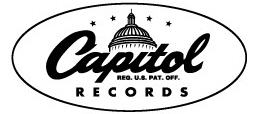 When Capitol Records saw that the movie was opening in November, they excitedly put together cover artwork for the anticipated soundtrack album and assigned another catalog number (ST 3354) in conjunction with it being released on their newly formed Apple Records label. This too was shelved for the time being because of the “White Album” being their primary focus. “We want it out before the 'Yellow Submarine” LP comes out,” Paul stated in early July. When Capitol Records saw that the movie was opening in November, they excitedly put together cover artwork for the anticipated soundtrack album and assigned another catalog number (ST 3354) in conjunction with it being released on their newly formed Apple Records label. This too was shelved for the time being because of the “White Album” being their primary focus. “We want it out before the 'Yellow Submarine” LP comes out,” Paul stated in early July.
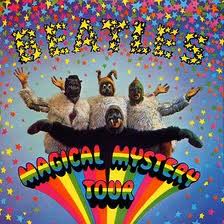 In fact, the initial plan was to release the new Beatles songs from the film in the form of an EP, proposed for release in September of 1968. This would have been similar to what they had just done in Britain with the six tracks they had recorded for “Magical Mystery Tour” the previous year. However, since EP's didn't sell well in the states, Capitol combined those six songs with five others and created the “Magical Mystery Tour” album. A decision was therefore made to turn the four new Beatles songs, along with two previously released Beatles tracks and a George Martin prepared film score, into a full length album for worldwide consumption. However, to show that such plans for an EP were still being seriously considered, a master tape was prepared on March 13th, 1969 by EMI employee Edward Gadsby-Toni that consisted of not four, but five songs, including the as yet unreleased “Across The Universe” which was eventually destined for release on the World Wildlife Fund charity album "No One's Gonna Change Our World." In fact, the initial plan was to release the new Beatles songs from the film in the form of an EP, proposed for release in September of 1968. This would have been similar to what they had just done in Britain with the six tracks they had recorded for “Magical Mystery Tour” the previous year. However, since EP's didn't sell well in the states, Capitol combined those six songs with five others and created the “Magical Mystery Tour” album. A decision was therefore made to turn the four new Beatles songs, along with two previously released Beatles tracks and a George Martin prepared film score, into a full length album for worldwide consumption. However, to show that such plans for an EP were still being seriously considered, a master tape was prepared on March 13th, 1969 by EMI employee Edward Gadsby-Toni that consisted of not four, but five songs, including the as yet unreleased “Across The Universe” which was eventually destined for release on the World Wildlife Fund charity album "No One's Gonna Change Our World."
Recording The Album
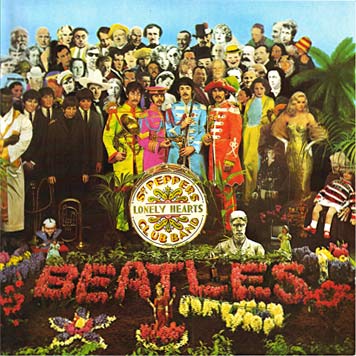 Of the six Beatles songs that appear on the album, the first to be recorded was the previously released title song “Yellow Submarine,” the recording of which began on May 26th, 1966. Then came the newly released “Only A Northern Song” which began being recorded on February 13th, 1967 during the sessions for the “Sgt. Pepper” album and then was eventually delegated for release on this soundtrack album. Another two of the newly released songs on the album began being recorded in May of 1967, “All Together Now” on May 12th and “It's All Too Much” on May 25th. “All You Need Is Love” first saw the recording studio on June 14th, 1967 and, although the song was previously released that year, this soundtrack album contained the first ever stereo mix of the song. Finally, John's boisterous “Hey Bulldog” was fully recorded on February 11th, 1968. Of the six Beatles songs that appear on the album, the first to be recorded was the previously released title song “Yellow Submarine,” the recording of which began on May 26th, 1966. Then came the newly released “Only A Northern Song” which began being recorded on February 13th, 1967 during the sessions for the “Sgt. Pepper” album and then was eventually delegated for release on this soundtrack album. Another two of the newly released songs on the album began being recorded in May of 1967, “All Together Now” on May 12th and “It's All Too Much” on May 25th. “All You Need Is Love” first saw the recording studio on June 14th, 1967 and, although the song was previously released that year, this soundtrack album contained the first ever stereo mix of the song. Finally, John's boisterous “Hey Bulldog” was fully recorded on February 11th, 1968.
 On October 22nd and 23rd, 1968, George Martin and a 41-piece orchestra entered EMI Studio One to record the soundtrack music that would be included on side two of the “Yellow Submarine” soundtrack album. Or should I say, re-record the soundtrack music. “It was more convenient to do so,” George Martin explains, “and no more costly since the original orchestra would have had to be paid twice anyway if we had used the soundtrack for the record.” The engineers for both of these three-hour sessions were Geoff Emerick and Nick Webb. On October 22nd and 23rd, 1968, George Martin and a 41-piece orchestra entered EMI Studio One to record the soundtrack music that would be included on side two of the “Yellow Submarine” soundtrack album. Or should I say, re-record the soundtrack music. “It was more convenient to do so,” George Martin explains, “and no more costly since the original orchestra would have had to be paid twice anyway if we had used the soundtrack for the record.” The engineers for both of these three-hour sessions were Geoff Emerick and Nick Webb.
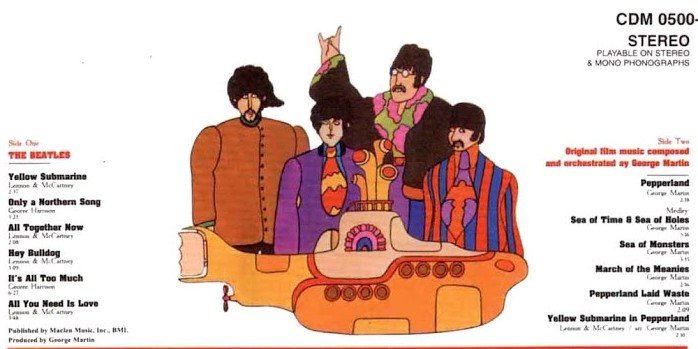 Most record buyers felt somewhat ripped-off when they realized that only the first side of this new Beatles album contained songs played by The Beatles, two of which were previously released nonetheless. “Brian made a mistake by letting George Martin put in all those fills in 'Yellow Submarine,' the 'Sea Of Holes' sh*t,” remarked Lennon at the time. “He recorded all this terrible sh*t that went out with our LP, you know. If you check it out, it's a whole sort of joke. George Martin is on one side of our album. Oh, we didn't notice that.” Most record buyers felt somewhat ripped-off when they realized that only the first side of this new Beatles album contained songs played by The Beatles, two of which were previously released nonetheless. “Brian made a mistake by letting George Martin put in all those fills in 'Yellow Submarine,' the 'Sea Of Holes' sh*t,” remarked Lennon at the time. “He recorded all this terrible sh*t that went out with our LP, you know. If you check it out, it's a whole sort of joke. George Martin is on one side of our album. Oh, we didn't notice that.”
All this having been said, the entire “Yellow Submarine” soundtrack album was recorded between May 26th, 1966 and October 23rd, 1968.
Success Of The Album
The Beatles were on a definite roll in America as far as the Billboard album chart was concerned. The “White Album” spent a total of nine weeks in the #1 spot, from November 28th, 1968 to March 1st, 1969. With 30 new Beatles songs contained on this double album package, you would think Beatles fans would have enough to digest for a while, especially since their wait from The Beatles previous American album, “Magical Mystery Tour,” had been a full year.
 However, a mere seven weeks after the “White Album” was released, a new Beatles album debuted on the market. The “Yellow Submarine” soundtrack album also soared up the charts, indicating that any new Beatles music, even if it was only a total of four new songs, was in high demand. It peaked at the #2 position on the Billboard album chart during the final week that the “White Album” was at #1. This soundtrack album stayed on the Billboard chart for a total of 25 weeks and was certified as a gold record selling over a million copies. And with George Martin's orchestral score on side two of the album, it undoubtedly proved to be his biggest money maker as far as royalties are concerned, not to mention that the album became a permanent fixture in the Beatles catalog throughout all future repackaging reissues and box sets. However, a mere seven weeks after the “White Album” was released, a new Beatles album debuted on the market. The “Yellow Submarine” soundtrack album also soared up the charts, indicating that any new Beatles music, even if it was only a total of four new songs, was in high demand. It peaked at the #2 position on the Billboard album chart during the final week that the “White Album” was at #1. This soundtrack album stayed on the Billboard chart for a total of 25 weeks and was certified as a gold record selling over a million copies. And with George Martin's orchestral score on side two of the album, it undoubtedly proved to be his biggest money maker as far as royalties are concerned, not to mention that the album became a permanent fixture in the Beatles catalog throughout all future repackaging reissues and box sets.
Written and compiled by Dave Rybaczewski
CLICK ON THE SONG TITLES BELOW TO READ THE IN-DEPTH HISTORY OF THE SONGS ON THE "YELLOW SUBMARINE" SOUNDTRACK
|
IF YOU WOULD LIKE TO MAKE A DONATION TO KEEP THIS WEBSITE UP AND RUNNING, PLEASE CLICK BELOW!
Sign Up Below for our MONTHLY BEATLES TRIVIA QUIZ!
|